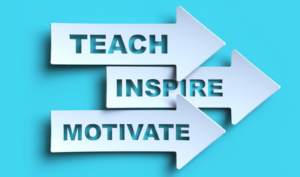
Empowering Women in Leadership: A Call to Action
The State of Women in Leadership: Room for Improvement We often hear about the business benefits of women in leadership roles. That isn’t just wishful

The State of Women in Leadership: Room for Improvement We often hear about the business benefits of women in leadership roles. That isn’t just wishful

As organizations enter a new era, we’re seeing a clear shift in management methods and practices. Traditional command-and-control styles are giving way to a more

Pinpointing people with leadership potential is a crucial talent management responsibility. After all, your company’s long-term success depends upon the ability to identify future leaders

If you subscribe to our twice-monthly TalentCulture newsletter, or you follow us on social media, you probably know we often publish original articles by business

Today’s workforce is rapidly changing, as Boomers pass the baton to their Gen X, Millennial, and Gen Z counterparts. However, for many organizations, this transition

People often hate the idea of networking, either because they’re introverts by nature, they’re afraid of rejection, or they don’t want to seem pushy, self-absorbed,

Anyone who says being a leader is easy is simply not being honest. Leadership is hard. Yes, I said it. And that shouldn’t shock anyone.

Human resources can be a highly rewarding profession, especially at technology startup companies. In fact, recent research says effective human resources management actually helps drive

You’re a business leader. You believe in your company with all your heart. Your commitment to the organization’s mission drives you to aim high, work

Leaders, do workforce engagement issues keep you up at night? If not, here’s a powerful wake-up call from Gallup. Last year, the global employee engagement

Sponsored by The Culture Platform What tools actually help managers manage their people? That’s the most important question every organization needs to ask itself as the

When the pandemic arrived in 2020, everyone’s definition of work changed in a heartbeat. Most people headed home, leaving their offices, cubicles, water coolers, and

If you lead a business of any kind, it’s essential to understand the factors that influence employee satisfaction in your organization. This kind of insight

Faced with increasingly turbulent economic times, businesses are rapidly learning the importance of strong leadership. The world has had enough problems dealing with the Covid-19

People often ask me which HR trends should be on their radar. It’s a fair question, because I organize two of the HR profession’s most

Keeping valued employees onboard is top-of-mind for many organizations these days. But what kind of employee retention strategies are actually working? To find out, we

Numerous jobs can be performed remotely or on a hybrid schedule. Still, more than 70% of full-time roles require people to work onsite. For instance,

Sponsored by The Culture Platform At some point in the last 20 years, companies started to believe employee engagement should define a manager’s role. And

After years of upheaval that have redefined society, business and work, we’ve entered a period some call the “Great Reflection.” During this era of mindfulness,

Imagine you’re a hard-working entry-level employee who’s been in your current position for less than a year. Your skills are solid, but they don’t help

At some point, every organization will face an economic downturn. It could be a global recession or a serious slump in one of the industries

In response to the Great Resignation, employers everywhere are reevaluating their talent strategies. As part of this process, they’re seeking cost-effective ways to retain employees
In baseball, the term “one pitch pitcher” refers to a pitcher who is overly reliant on one type of pitch (fastball, curveball, etc.) to be
There is a lot of discussion about productivity, but I’ve always preferred the term velocity. I’ve found that my velocity to goal determines my career

Negative performance feedback is tricky to give and receive — but hiding the message doesn’t help. Try these 5 ideas for a more satisfying outcome